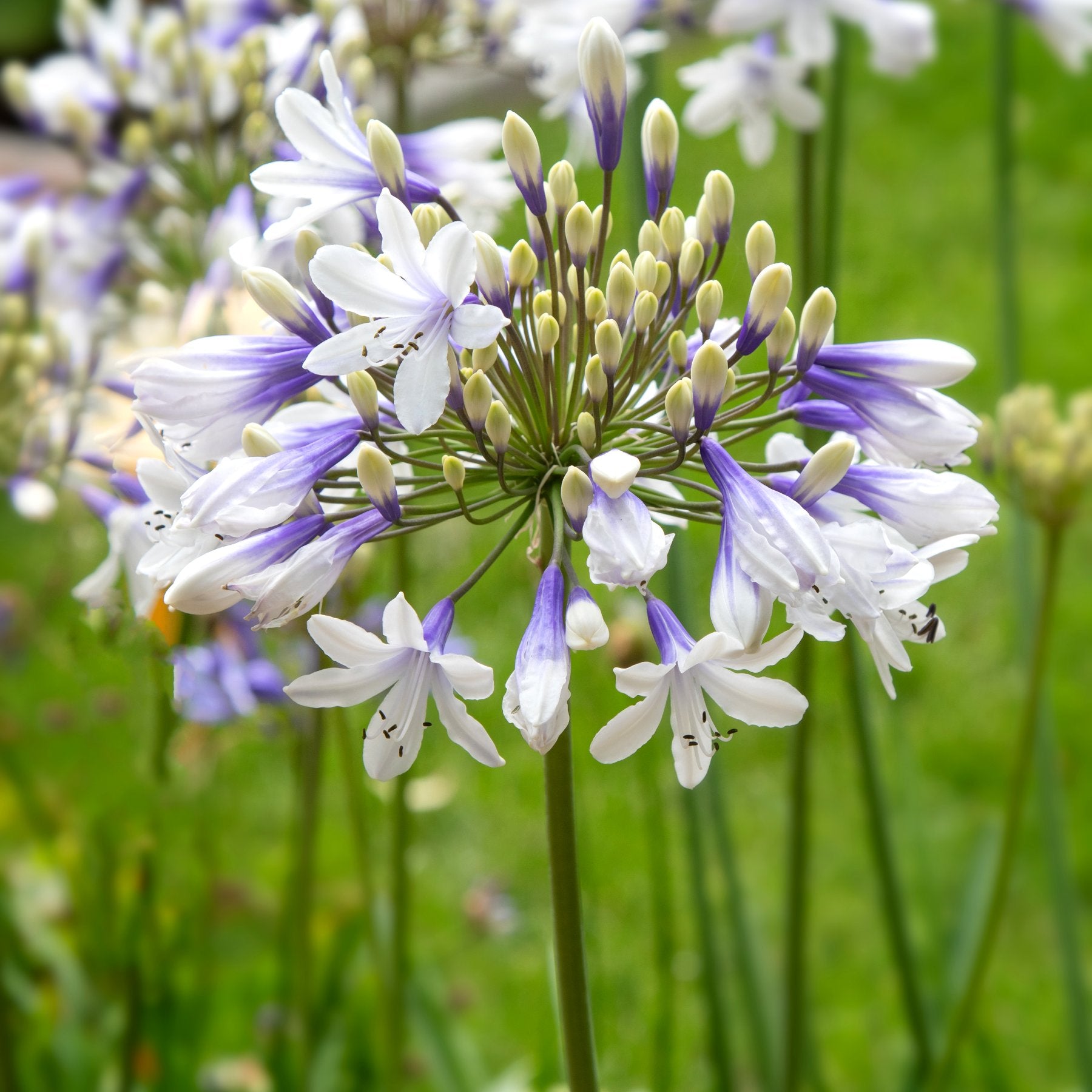Typical Agapanthus Issues and How to Solve Them
Typical Agapanthus Issues and How to Solve Them
Blog Article
Understanding the Art of Agapanthus Treatment: Crucial Actions for Healthy Development and Vibrant Flowers
In the world of cultivation, the growing of agapanthus stands as a rewarding undertaking for those that look for to support these elegant flowering plants. With their striking flowers and elegant foliage, agapanthus has captured the attention of garden enthusiasts worldwide. Nevertheless, attaining optimal development and dynamic blossoms requires a nuanced method that incorporates numerous crucial steps. From selecting the best range to mastering trimming methods, the journey in the direction of cultivating flourishing agapanthus plants is multifaceted and holds the essential to unlocking the complete potential of these agricultural treasures.

Picking the Right Agapanthus Range

When picking the right Agapanthus variety for your garden, think about factors such as environment viability, bloom color, and growth habit. Additionally, consider the environment in your area to guarantee the Agapanthus selection you choose can flourish in your certain conditions. Recognizing the growth routine of different Agapanthus selections is critical for proper placement within your garden.
Perfect Planting Problems
Considering the optimal ecological needs is necessary for successful Agapanthus growing. Agapanthus plants are sensitive to chilly temperature levels and should be secured from frost during winter months.
To guarantee healthy and balanced development and vibrant blossoms, plant Agapanthus light bulbs at a depth of regarding 2-4 inches and area them 8-12 inches apart. Adding raw material, such as compost, to the dirt can boost water drainage and fertility, advertising durable origin development. Mulching around the base of the plants aids retain wetness and reduces weed development. Routine watering is vital, especially during the growing season, to keep the soil continually moist but not soaked.
Watering and Feeding Tips
Keeping appropriate wetness degrees and supplying crucial nutrients are vital components in the care program for Agapanthus plants. When it pertains to watering Agapanthus, it is vital to strike an equilibrium. These plants prefer consistently wet dirt but are susceptible to root rot if overwatered. Throughout the expanding season, water deeply once a week, guaranteeing the dirt is well-draining to avoid waterlogging. In hotter climates or during periods of dry spell, more frequent watering might be needed to keep the dirt equally moist. Nonetheless, reduce watering in the winter to avoid water logged problems.
Feeding Agapanthus is important for advertising healthy development and prolific blooms. Use a well balanced fertilizer, such as a 10-10-10 formula, in the early spring as brand-new development emerges. By complying with these watering and fertilizing suggestions, you can ensure your Agapanthus plants flourish and generate vivid, long-lasting blooms.
Trimming Techniques for Agapanthus
Pruning Agapanthus plants at the proper times and with proper strategies is crucial for keeping their health and promoting optimal development and blooming. The optimal time to trim Agapanthus remains in late winter or early spring prior to brand-new growth arises. Start by removing any type of yellowing or dead leaves near the base of the plant. Cut them as short as possible without harming the arising shoots.
Deadheading spent blossoms can additionally reroute the plant's power into producing even more blooms instead than setting seeds. If you want to gather seeds for proliferation, leave some blossoms to dry and mature on the plant.
Remember to make use of tidy, sharp devices to make exact cuts and reduce the risk of presenting conditions. Agapanthus. Routine pruning will certainly aid keep your Agapanthus looking healthy and neat while guaranteeing a bountiful screen of attractive blossoms
Managing Usual Pests and Illness
After ensuring correct pruning strategies for Agapanthus, it click over here is vital to address typical pests and diseases that can affect the wellness and vitality of these plants. One typical pest that influences Agapanthus is the Agapanthus gall midget.
Furthermore, Agapanthus plants can endure from origin rot if they are grown in poorly draining pipes dirt. By being vigilant and taking prompt action against conditions and parasites, you can assist your Agapanthus plants grow and generate vibrant blooms. Agapanthus.

Conclusion
In final thought, mastering the this contact form art of agapanthus care includes choosing the right variety, providing perfect planting problems, correct watering and fertilizing, ideal pruning methods, and attending to typical parasites and conditions. By complying with these vital steps, you can ensure healthy and balanced development and lively flowers for your agapanthus plants. Remember to routinely monitor and preserve your plants to promote their total wellness and longevity.
To make certain healthy and balanced development and lively blossoms, plant Agapanthus bulbs at a deepness of regarding 2-4 inches and area them 8-12 inches apart. By adhering to these watering and fertilizing suggestions, you can guarantee your Agapanthus plants flourish and generate lively, lasting blossoms.
One common insect that impacts Agapanthus is the weblink Agapanthus gall midget. Additionally, Agapanthus plants can endure from root rot if they are grown in inadequately draining pipes soil. By complying with these vital actions, you can make certain healthy and balanced growth and lively blooms for your agapanthus plants.
Report this page